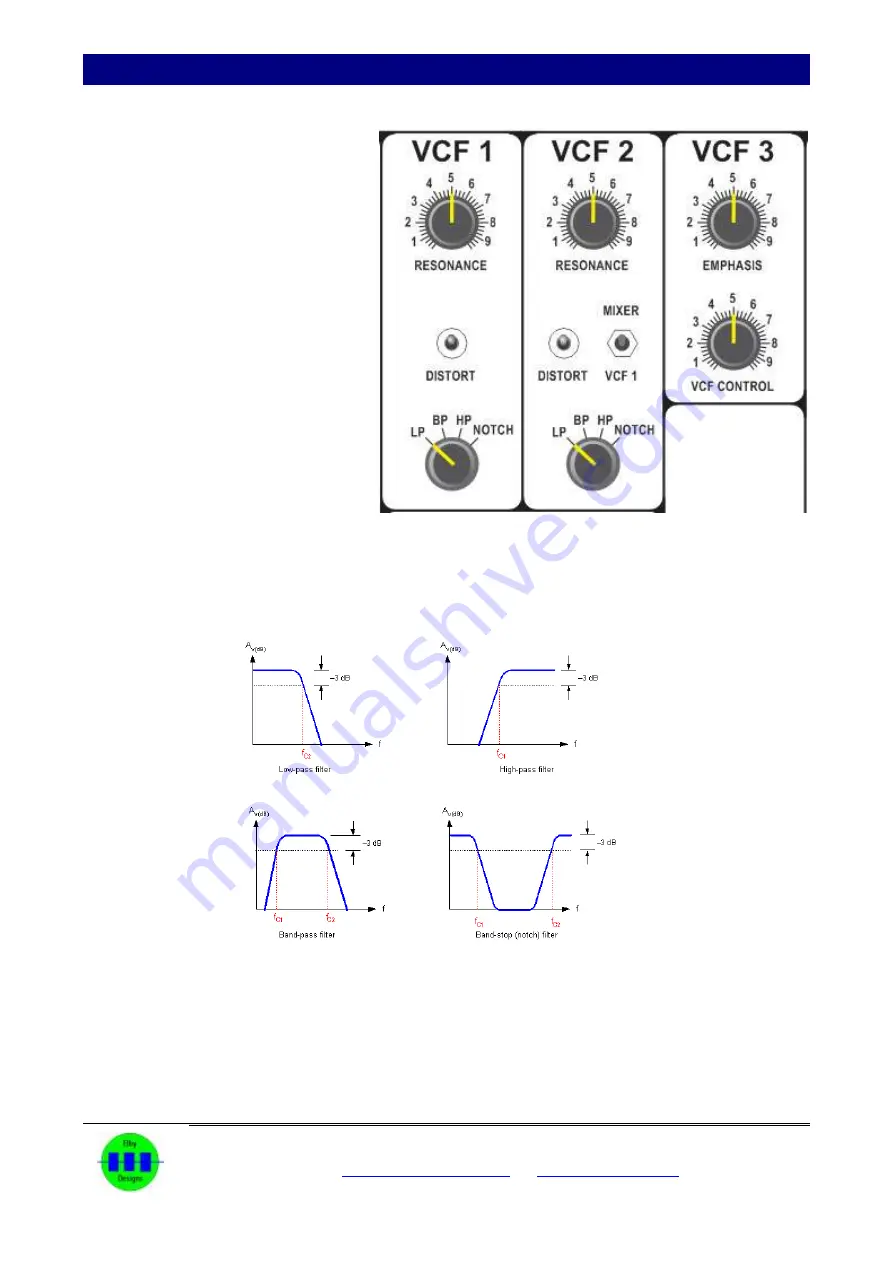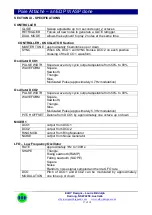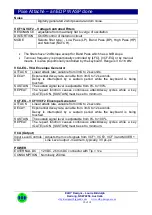
Pixie Attaché
– an EDP WASP clone
ELBY Designs
– Laurie Biddulph
Kariong, NSW 2250, Australia
12 of 18
SECTION VIII - The Filters
Filters can be considered to be a complex
type of tone control. There are four types
of filtering available:
(a) Low Pass: This lets through
all parts of a signal below a
set frequency.
(b) Band
Pass:
This
allows
frequencies through within a
certain band of frequencies
either side of a set frequency.
(c) High
Pass:
This
allows
through all parts of a signal
above a set frequency.
(d) Notch: Also known as Band-
stop. This, basically, is the
inverse of the Band Pass
filter
and
supresses
frequencies within a certain
band of frequencies either
side of a set frequency.
It should be noted that there is not a sudden cut-off above, at or below the set frequency, but a gradual
decrease in volume of pitches moving away from the set frequency. This may become clearer by reference
to Figure 2.
The set frequency about which the filter operates is controlled by the [FREQUENCY] control (14).
Figure 2 - Filter types
The Pixie Attaché has 3 separate filters. VCF 1 and VCF 2 are both based on the original EDP WASP Filter
while VCF 3 is a simple low-pass filter. VCF 1 and VCF 2 also include a distortion circuit (courtesy of J.
Haible) which adds an extra dimension to the filters output.




































